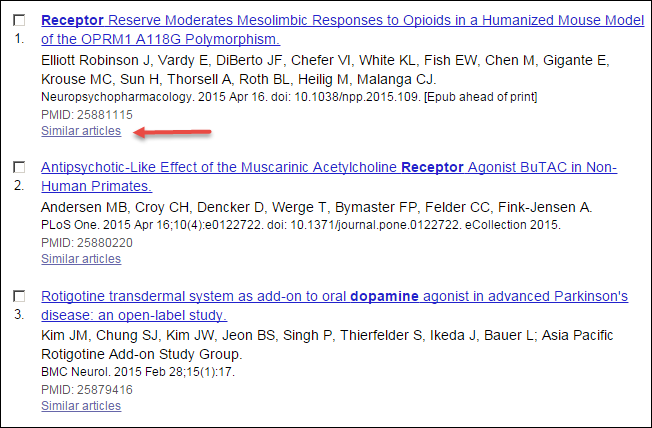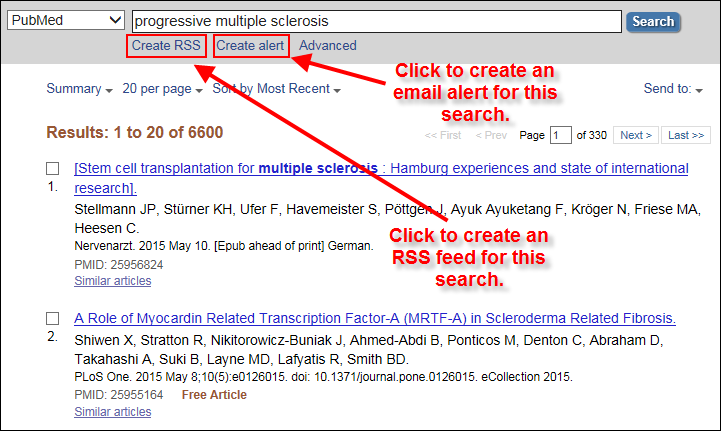Independence Day Hours
The Libraries will be closed Friday – Sunday, July 3rd – 5th for the Independence Day Holiday. Also on Thursday, July 2nd, the Dental Library will close at 5 pm and the Isché Library will close at 6 pm.
The Libraries will be closed Friday – Sunday, July 3rd – 5th for the Independence Day Holiday. Also on Thursday, July 2nd, the Dental Library will close at 5 pm and the Isché Library will close at 6 pm.
EBSCO is one of the Library’s many eBook providers, and over the past two years, we have been able to substantially increase our eBook offerings through the EBSCOhost platform. We currently have over 100 titles in a variety of disciplines that support each of our 6 schools.
All of the EBSCO eBooks are accessible through our library catalog and E-Journals & E-Books A to Z List, but now we have added another access point through our list of databases under ebooks (EBSCOhost). This option will allow the user to browse and search all of the EBSCO eBooks in one place. To see a complete listing of our EBSCO eBooks, be sure to click on the “eBooks” link on the top banner of the database and then select “View All” on the “Highlights” bar.
Don’t forget to check out all of our eBook collections. We have created a handy-dandy ebooks LibGuides to help you navigate all the different options.
*EDIT* The problem was resolved at 10:45 am. Please contact the Library if you continue to experience difficulties accessing library resources.
We are currently experiencing technical difficulties with our library catalog and online products. We are working to resolve the issue and will post more information as it becomes available.
We apologize for any inconvenience this outage causes.
*EDIT* And the server came back online at 3:35pm
INNOPAC is currently down due to a system upgrade. It should be back up shortly.
The National Library of Medicine has launched a medical device database, AccessGUDID, currently in beta. Searching is by device name, identification number or manufacturer. They are seeking input from users on ways to improve the database.
The Dental Library now offers a charging station for mobile devices! It is equipped with 6 inter-changeable tips: 3 micro-USB tips (non-Apple devices), 2 for iPhone 5 and newer, and 1 for iPhone 4 and older. Additionally, it provides 2 USB ports which can receive any charging cable, as well as 2 universal electric outlets. It is located at the circulation desk of the library on the third floor of the Administration Building.
Recently, PubMed has announced that it has changed a few popular features that you may notice in your search results:
Within the article summary display, two changes have been made. The term “Related Citations” has been changed to “Similar Articles”. It was thought that “Related Citations” was ambiguous., The algorithm to generate the results of a search on for similar articles has not changed, just the name of the feature. Also, the status tag line has been removed from the article summary display. Most users will not notice this change but experienced searchers may. The status tag line is still included in the Abstract display.

The “Save Search” link for creating My NCBI email alerts has been renamed “Create alert” and the “RSS” link has been renamed “Create RSS”. Once again, these changes will not affect the functionality of PubMed they are only intended to eliminate ambiguity and to make the process smoother.

Finally, for those who use PubMed Mobile, there have been updates with a number of styling modifications and additional enhancements including a “Trending articles” feature.
For more information about these changes, you can refer to the New and Noteworthy link on the bottom of the PubMed screen or refer to the NLM Technical Bulletin.
The Library is pleased to announce that we have purchased the latest edition of Devita, Hellman, and Rosenberg’s Cancer: Principles and Practice of Oncology (10th ed., 2015) online through our Books@Ovid platform. Vincent Devita and his colleagues have been publishing this classic text since 1982! The 10th edition of this definitive oncology resource includes several new chapters, and this online book will be updated quarterly with new content.
This title can be found via our library catalog: http://innopac.lsuhsc.edu/, and it can be accessed directly from the Books@Ovid platform. For off campus access, be sure to log in through our Web Access Management system (WAM) using your library barcode number and PIN.
A new selection of articles has been added to the Faculty Publications display in the Ische Library. These eight articles, as well as all of the articles in our Faculty Publications database, are authored by at least one member of our research community here at LSUHSC-New Orleans. Each month the Library is proud to present copies of eight of these publications in a rotating display of 16. They can be viewed in the Reference area, on the wall between the main entrance and the Library elevator, on the third floor of the Resource Center Building.
Here is a list of the newest articles to be featured, with the LSUHSC-NO researchers in bold print:
1. Bankhead S, Jackson J, Brodell R. Annular plaques on the back and flanks. J Fam Pract. 2015;64:47-49.
2. Brickman TM, Stark MW, Jeyakumar A. Unusual case of neonatal hypercalcemia. Int J Pediatr Otorhinolaryngol. 2015;79:758-9.
3. Bruce-Keller AJ, Salbaum JM, Luo M, Blanchard E IV, Taylor CM, Welsh DA, Berthoud H-R. Obese-type gut microbiota induce neurobehavioral changes in the absence of obesity. Biol Psychiatry. 2015;77:607-615.
4. Cardenas D, Carter PM, Nation CS, Pizarro JC, Guidry J, Aiyar A, Kelly BL. LACK, a RACK1 ortholog, facilitates cytochrome c oxidase subunit expression to promote Leishmania major fitness. Mol Microbiol. 2015;96:95-109.
5. Diaz JH. Increasing risks of human dirofilariasis in travelers. J Travel Med. 2015;22:116-123.
6. Ghonim MA, Pyakurel K, Ju J, Rodriguez PC, Lammi MR, Davis C, Abughazleh MQ, Mansy MS, Naura AS, Boulares AH. DNA-dependent protein kinase inhibition blocks asthma in mice and modulates human endothelial and CD4+ T-cell function without causing severe combined immunodeficiency. J Allergy Clin Immunol. 2015;135:425-440.
7. Janz DR, Bastarache JA, Rice TW, Bernard GR, Warren MA, Wickersham N, Sills G, Oates JA, Roberts LJ II, Ware LB. Randomized, placebo-controlled trial of acetaminophen for the reduction of oxidative injury in severe sepsis: The acetaminophen for the reduction of oxidative injury in severe sepsis trial. Crit Care Med. 2015;43:534-541.
8. Katner A, Lackovic M, Streva K, Paul V, Trachtman WC. Evaluation of available data sources to prioritize parishes for arsenic monitoring and outreach related to private well drinking water. J Public Health Manag Pract. 2015;21 Suppl 2:S93-S101.
Publications cited in the Faculty Publications database are harvested weekly from a variety of sources, such as PubMed, SCOPUS, and CINAHL, to name a few. In addition to articles they include books, book chapters, papers, editorials, letters to the editor, and meeting abstracts, all authored by at least one member of the LSUHSC-NO community. The database is maintained by Reference Librarian Kathy Kerdolff and is available to the general public here or via the Library’s webpage. For a PDF of a bibliography of this month’s additions, click here. If you have an article you would like us to highlight or if you have any questions regarding the display or the database, you can contact Kathy Kerdolff.
Please come to the Library and view these recent publications by our research community.
 R2 is back in action! Please let us know if you continue to have problems accessing these ebooks.
R2 is back in action! Please let us know if you continue to have problems accessing these ebooks.
We apologize for any inconvenience this outage caused!
We are currently experiencing some technical difficulties with the R2 Digital Library. The problem has been reported, and we will update the blog as soon as we find out more information.
The Library is pleased to announce that we now have an online subscription to the most recent edition of the Scientific style and format: the CSE manual for authors, editors, and publishers. Currently in its 8th edition, the CSE style manual has been a standard reference for scientific publishing since 1960. As it is the required format for Graduate Studies theses and dissertations, we are most excited to be able to offer our users this access both on and off campus. For off campus access, be sure to log in through our Web Access Management system (WAM) using your library barcode number and PIN.
We hope this helps ease and simplify your writing process!
The Network Center in Baton Rouge unexpectedly lost power around 7:30 am this morning. Systems have been slowly coming back online as the IT department finds alternatives. Full power will not be restored until the end of the day (fingers crossed).
At this moment, we do not have access to our online catalog, INNOPAC, but the Libraries’ webpages have been restored. Please contact us for work arounds.
Our chat and email services do seem to be back up. And telephone service was unaffected.
On Friday, May 15th, the original Visitors Parking Lot at the Dental School Administration and Clinic Buildings (across Florida Avenue by the railroad tracks) will be closed the entire day. This closure is necessary to allow for the placement of modular buildings for the School of Dentistry Inter-Professional Primary Care Clinic. Please see this illustration highlighting the area of the closure.
PayPaw will be down for most of Thursday, May 14th for scheduled maintenance. All printers and photocopiers will be inoperable during this window. This outage will be campus-wide.